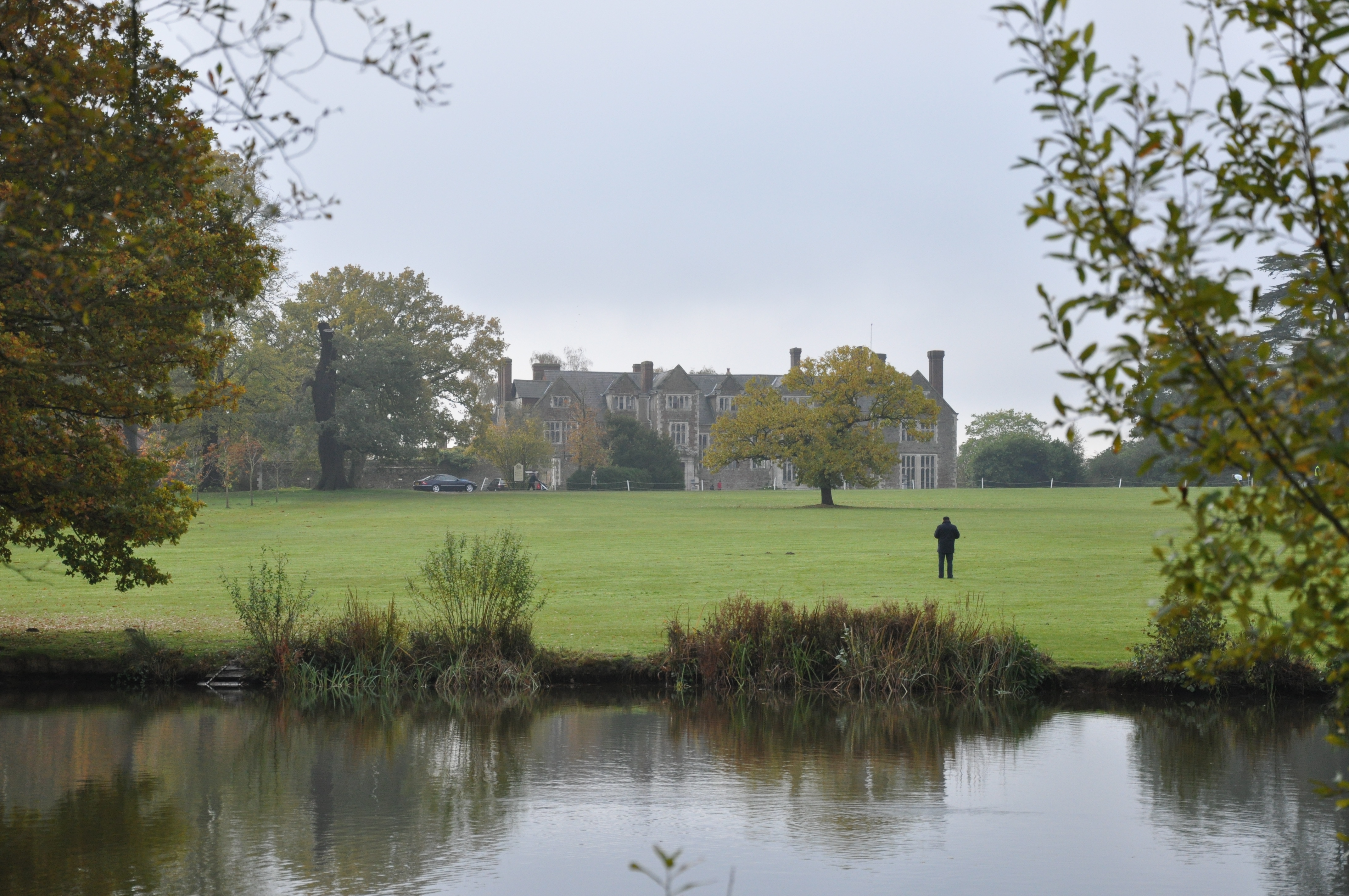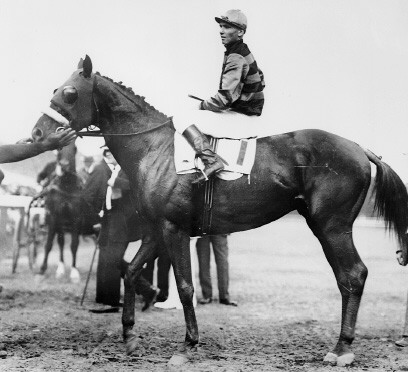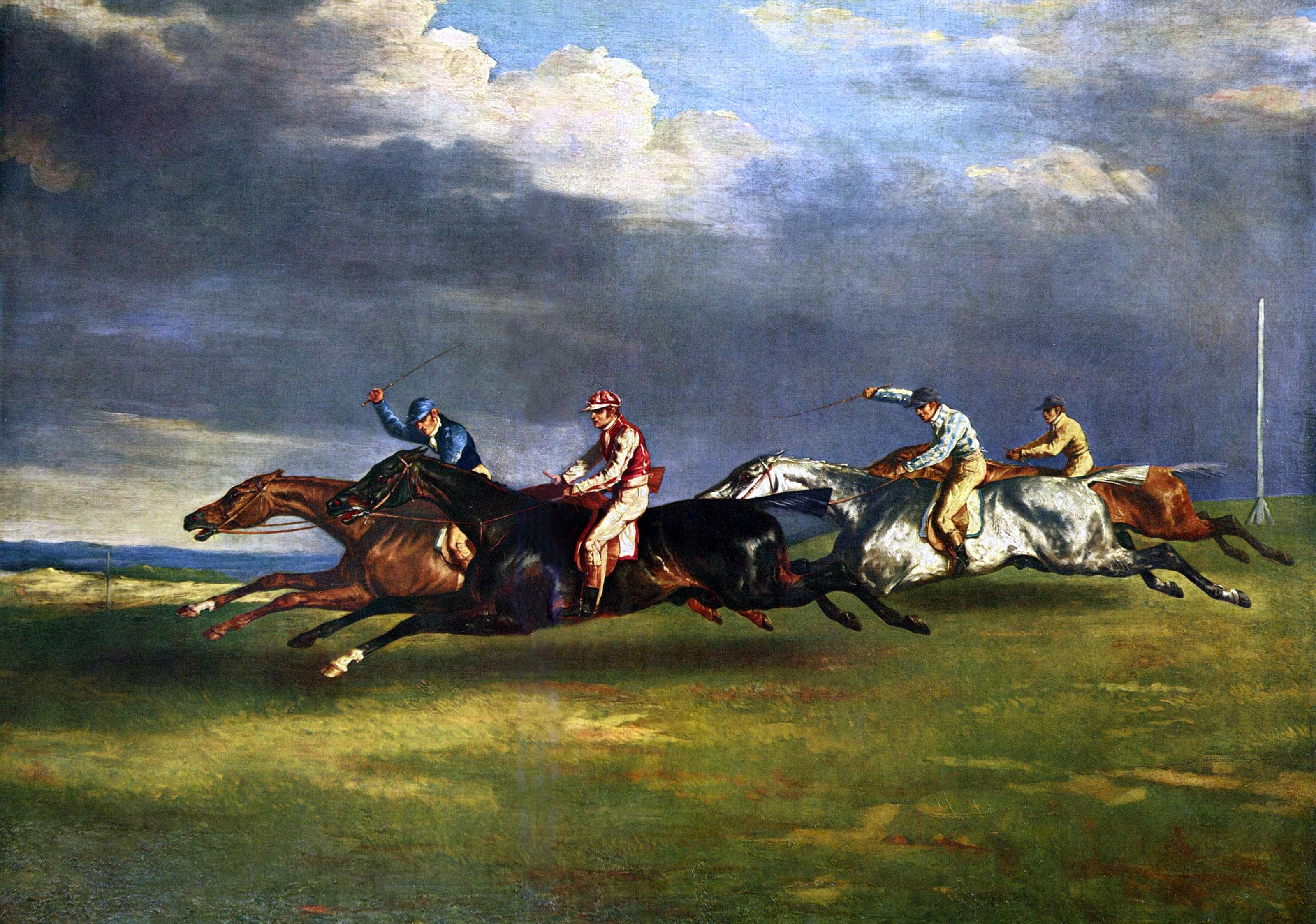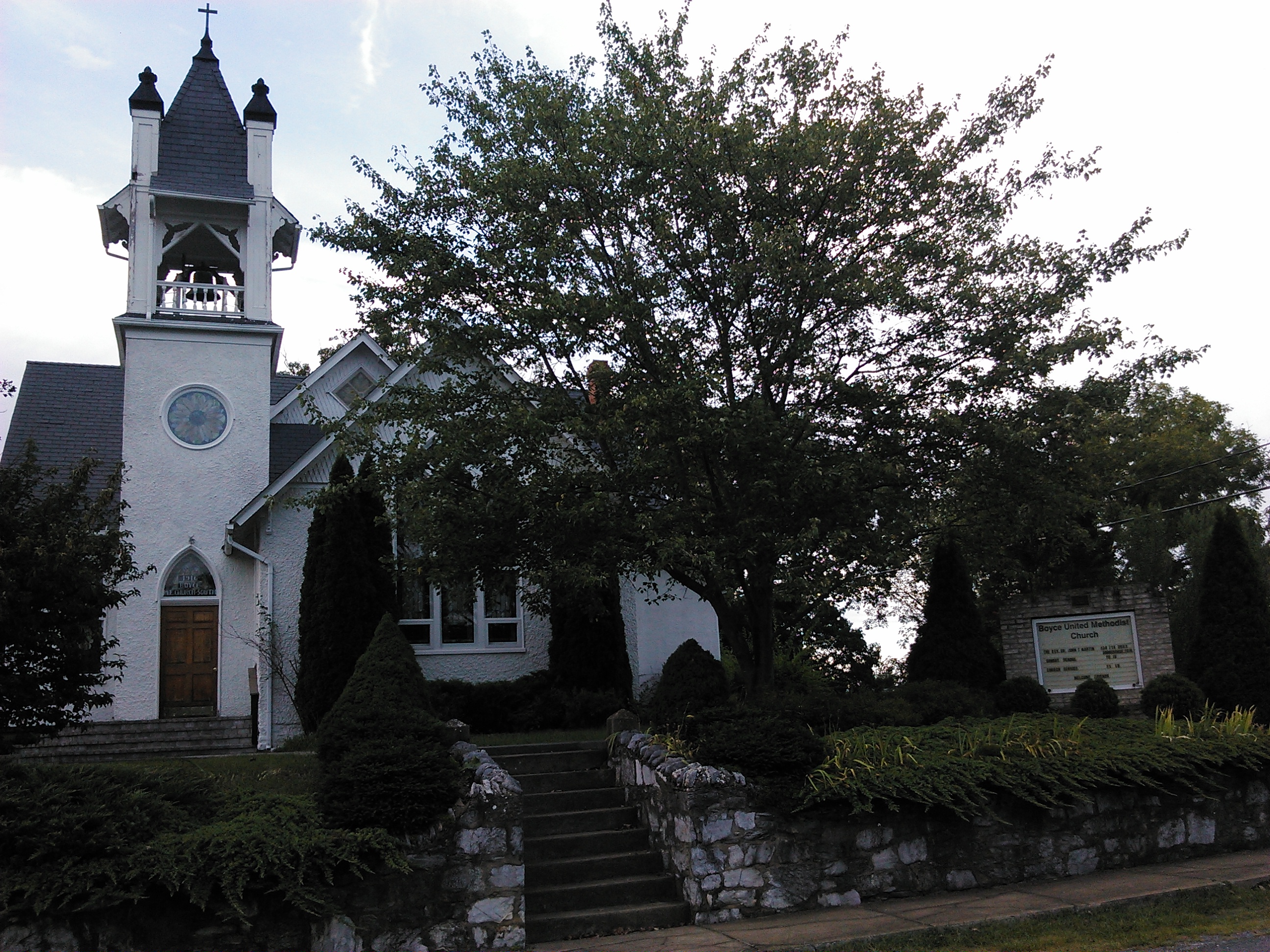|
William Du Pont Jr.
William du Pont Jr. (February 11, 1896 – December 31, 1965) was an English-born American businessman and banker, and a prominent figure in the sport of Thoroughbred horse racing. He developed and designed more than 20 racing venues, including Fair Hill at his 5,000-acre estate in Maryland. A member of the Delaware Du Pont family, he was the son of William du Pont and Annie Rogers Zinn, and brother to Marion duPont Scott, a noted horsewoman and breeder. He, as his father, had no middle name. Early life and education William (also called Willie) was born at Loseley Park, a 16th-century manor in Surrey, England. He was the second child and only son of Annie Zinn (née Rogers) and William du Pont. His older sister was Marion, and they grew up at Montpelier, the historic home of President James Madison, which their parents had bought and expanded. They both were educated in private schools and became interested in the world of thoroughbred horseracing, including steeplechase, hun ... [...More Info...] [...Related Items...] OR: [Wikipedia] [Google] [Baidu] |
Loseley Park
Loseley Park is a large Tudor manor house with later additions and modifications south-west of Guildford, Surrey, England, in Artington close to the hamlet of Littleton. The estate was acquired by the direct ancestors of the current owners, the More-Molyneux family, at the beginning of the 16th century. The house built for Sir William More is a Grade I listed building, the highest rank in architecture or heritage. Loseley appears in the Domesday Book of 1086 as ''Losele''. It was held by Turald (Thorold) from Roger de Montgomery. Its Domesday assets were: 2 hides. It had 4 ploughs, of meadow. It rendered £3. The papers of Sir Thomas Cawarden, Master of the Revels, were formerly preserved in the house. Loseley Park is still the residence of the More-Molyneux family and is open to the public. The 17th-century tithe barn is available for weddings. The house The present house was built between 1562 and 1568 with stone brought from the ruins of Waverley Abbey. The new house rep ... [...More Info...] [...Related Items...] OR: [Wikipedia] [Google] [Baidu] |
Georgian Architecture
Georgian architecture is the name given in most English-speaking countries to the set of architectural styles current between 1714 and 1830. It is named after the first four British monarchs of the House of Hanover—George I, George II, George III, and George IV—who reigned in continuous succession from August 1714 to June 1830. The so-called great Georgian cities of the British Isles were Edinburgh, Bath, pre-independence Dublin, and London, and to a lesser extent York and Bristol. The style was revived in the late 19th century in the United States as Colonial Revival architecture and in the early 20th century in Great Britain as Neo-Georgian architecture; in both it is also called Georgian Revival architecture. In the United States the term "Georgian" is generally used to describe all buildings from the period, regardless of style; in Britain it is generally restricted to buildings that are "architectural in intention", and have stylistic characteristics that are typical o ... [...More Info...] [...Related Items...] OR: [Wikipedia] [Google] [Baidu] |
Preakness Stakes
The Preakness Stakes is an American thoroughbred horse race held on Armed Forces Day which is also the third Saturday in May each year at Pimlico Race Course in Baltimore, Maryland. It is a Grade I race run over a distance of 9.5 furlongs () on dirt. Colts and geldings carry ; fillies . It is the second jewel of the Triple Crown, held two weeks after the Kentucky Derby and three weeks before the Belmont Stakes. First run in 1873, the Preakness Stakes was named by a former Maryland governor after the colt who won the first Dinner Party Stakes at Pimlico. The race has been termed "The Run for the Black-Eyed Susans" because a blanket of Maryland's state flower is placed across the withers of the winning colt or filly. Attendance at the Preakness Stakes ranks second in North America among equestrian events, surpassed only by the Kentucky Derby. History Two years before the Kentucky Derby was run for the first time, Pimlico introduced its new stakes race for three-year-olds, the ... [...More Info...] [...Related Items...] OR: [Wikipedia] [Google] [Baidu] |
Richard E
Richard is a male given name. It originates, via Old French, from Frankish language, Old Frankish and is a Compound (linguistics), compound of the words descending from Proto-Germanic language, Proto-Germanic ''*rīk-'' 'ruler, leader, king' and ''*hardu-'' 'strong, brave, hardy', and it therefore means 'strong in rule'. Nicknames include "Richie", "Dick (nickname), Dick", "Dickon", "Dickie (name), Dickie", "Rich (given name), Rich", "Rick (given name), Rick", "Rico (name), Rico", "Ricky (given name), Ricky", and more. Richard is a common English, German and French male name. It's also used in many more languages, particularly Germanic, such as Norwegian, Danish, Swedish, Icelandic, and Dutch, as well as other languages including Irish, Scottish, Welsh and Finnish. Richard is cognate with variants of the name in other European languages, such as the Swedish "Rickard", the Catalan "Ricard" and the Italian "Riccardo", among others (see comprehensive variant list below). People ... [...More Info...] [...Related Items...] OR: [Wikipedia] [Google] [Baidu] |
National Museum Of Racing And Hall Of Fame
The National Museum of Racing and Hall of Fame was founded in 1950 in Saratoga Springs, New York, to honor the achievements of American Thoroughbred race horses, jockeys, and trainers. In 1955, the museum moved to its current location on Union Avenue near Saratoga Race Course, at which time inductions into the hall of fame began. Each spring, following the tabulation of the final votes, the announcement of new inductees is made, usually during Kentucky Derby Week in early May. The actual inductions are held in mid-August during the Saratoga race meeting. The Hall of Fame's nominating committee selects eight to ten candidates from among the four Contemporary categories (male horse, female horse, jockey and trainer) to be presented to the voters. Changes in voting procedures that commenced with the 2010 candidates allow the voters to choose multiple candidates from a single Contemporary category, instead of a single candidate from each of the four Contemporary categories. For examp ... [...More Info...] [...Related Items...] OR: [Wikipedia] [Google] [Baidu] |
Preston M
Preston is a place name, surname and given name that may refer to: Places England *Preston, Lancashire, an urban settlement **The City of Preston, Lancashire, a borough and non-metropolitan district which contains the settlement **County Borough of Preston, a local government district containing the settlement from 1835 to 1974 ** Preston (UK Parliament constituency) **Preston railway station in Preston, Lancashire **The PR postcode area, also known as the Preston postcode area **Preston Urban Area, the conurbation with Preston at its core *Preston, Devon (in Paignton) * Preston, Teignbridge, in Kingsteignton parish *Preston, Dorset *Preston, East Riding of Yorkshire, near Kingston upon Hull *Preston, Cotswold, Gloucestershire * Preston, Forest of Dean, Gloucestershire *Preston, Hertfordshire *Preston, London, near Wembley **Preston (ward) * Preston, Northumberland, the location of Preston Tower *Preston, Rutland * Preston, Shropshire, in Upton Magna parish *Preston, Somerse ... [...More Info...] [...Related Items...] OR: [Wikipedia] [Google] [Baidu] |
Epsom Derby
The Derby Stakes, also known as the Epsom Derby or the Derby, and as the Cazoo Derby for sponsorship reasons, is a Group 1 flat horse race in England open to three-year-old colts and fillies. It is run at Epsom Downs Racecourse in Surrey on the first Saturday of June each year, over a distance of one mile, four furlongs and 6 yards (2,420 metres). It was first run in 1780. It is Britain's richest flat horse race, and the most prestigious of the five Classics. It is sometimes referred to as the "Blue Riband" of the turf. The race serves as the middle leg of the historically significant Triple Crown of British horse racing, preceded by the 2000 Guineas and followed by the St Leger, although the feat of winning all three is rarely attempted in the modern era due to changing priorities in racing and breeding, and the demands it places on horses. The name "Derby" (deriving from the sponsorship of the Earl of Derby) has been borrowed many times, notably by the Kentucky D ... [...More Info...] [...Related Items...] OR: [Wikipedia] [Google] [Baidu] |
Aga Khan III
Sultan Muhammad Shah (2 November 187711 July 1957), commonly known by his religious title Aga Khan III, was the 48th Imam of the Nizariyya. He played an important role in British Indian politics. Born to Aga Khan II in Karachi, Aga Khan III was educated at the Eton College and the University of Cambridge. He succeeded his father as the Imam in 1885 and worked to receive homage of his followers. In 1906, Aga Khan III became a founding member of the All-India Muslim League in British India. In 1932, he was nominated by the League of Nations to represent India and subsequently served as the president of the League of Nations from 1937 to 1938. Early life He was born in Karachi, Sindh during the British Raj in 1877 (now Pakistan), to Aga Khan II and his third wife, Nawab A'lia Shamsul-Muluk, who was a granddaughter of Fath Ali Shah of Persia. After Eton College, he went on to study at the University of Cambridge. Career In 1885, at the age of seven, he succeeded his father as Im ... [...More Info...] [...Related Items...] OR: [Wikipedia] [Google] [Baidu] |
Blenheim (horse)
Blenheim (1927–1958), also known as Blenheim II, was a British Thoroughbred race horse who won The Derby in 1930. As sire, he had a major influence on pedigrees around the world. Blenheim was highly tried, by European standards, as a two-year-old in 1929, winning four of his seven races. In the following season he was beaten in his first two races before recording an upset 18/1 win in the Derby. His racing career was ended by injury soon afterwards, and he was retired to stud, where he became an extremely successful and influential breeding stallion, both in Europe and North America. Background Blenheim was a brown horse standing 15.3 hands high with a white star and a white sock on his left hind leg, bred by Henry Herbert, 6th Earl of Carnarvon at his Highclere stud. He was sired by the good sire Blandford, a three-time British champion sire, whose other progeny included Bahram, Brantome, Trigo, Pasch and Windsor Lad. Blenheim's dam, Malva (1919–1941) who stood barel ... [...More Info...] [...Related Items...] OR: [Wikipedia] [Google] [Baidu] |
Boyce, Virginia
Boyce is a town in Clarke County, Virginia, Clarke County, Virginia, United States. The population was 749 at the 2020 United States census, 2020 census, up from 589 at the 2010 United States census, 2010 census. Geography Boyce is located in western Clarke County at (39.093118, −78.059190), along U.S. Route 340. It is southwest of Berryville, Virginia, Berryville, the county seat and northeast of Front Royal, Virginia, Front Royal. According to the United States Census Bureau, the town has a total area of , all of it land. The town is situated at the crossing of the Norfolk and Western Railway, Norfolk & Western Railway and the Winchester and Berry's Ferry Turnpike about northwest of Millwood, Virginia, Millwood, of which it is the shipping point; each from Old Chapel (Millwood, Virginia), Old Chapel and White Post, Virginia, White Post; and southeast of Winchester, Virginia. It is built upon a ridge, which drains on the east into Page Brook and to the west into Rosev ... [...More Info...] [...Related Items...] OR: [Wikipedia] [Google] [Baidu] |
The Tetrarch
The Tetrarch (1911–1935) was an Irish-bred, British-trained Thoroughbred racehorse. He was undefeated in a racing career of seven starts and was voted the best British-trained two-year-old of the 20th century according to the National Horseracing Museum. He did not race after 1913 and was retired to stud where he became an influential sire. Breeding Foaled at Straffan Station Stud, near Ardclough, in County Kildare in Ireland, he was sired by Roi Herode (France) out of Vahren. His damsire (Bona Vista) was by Bend Or (after whom Bend-Or spots are named). The Tetrarch was a gangly and less-than-attractive colt whose grey coat was sprinkled with white blotches. Dismissed as having no racing potential by some buyers, he was ultimately sold by his breeder to Major Dermot McCalmont and placed under the care of trainer Atty Persse. Racing record and legacy Sent to the track as a two-year-old, under jockey Steve Donoghue The Tetrarch easily defeated his competition. Quickly d ... [...More Info...] [...Related Items...] OR: [Wikipedia] [Google] [Baidu] |
Glossary Of North American Horse Racing
Glossary of North American horse racing: Additional glossaries at: *Glossary of Australian and New Zealand punting *Glossary of equestrian terms This is a basic glossary of equestrian terms that includes both technical terminology and jargon developed over the centuries for horses and other equidae, as well as various horse-related concepts. Where noted, some terms are used only in Ameri ... * Parimutuel betting#Parimutuel bet types A B C D E F G H I J L M N O P Q R S T U W References Bibliography * * External linksFrankie Lovato's 365 Days of Ra ... [...More Info...] [...Related Items...] OR: [Wikipedia] [Google] [Baidu] |







.jpg)